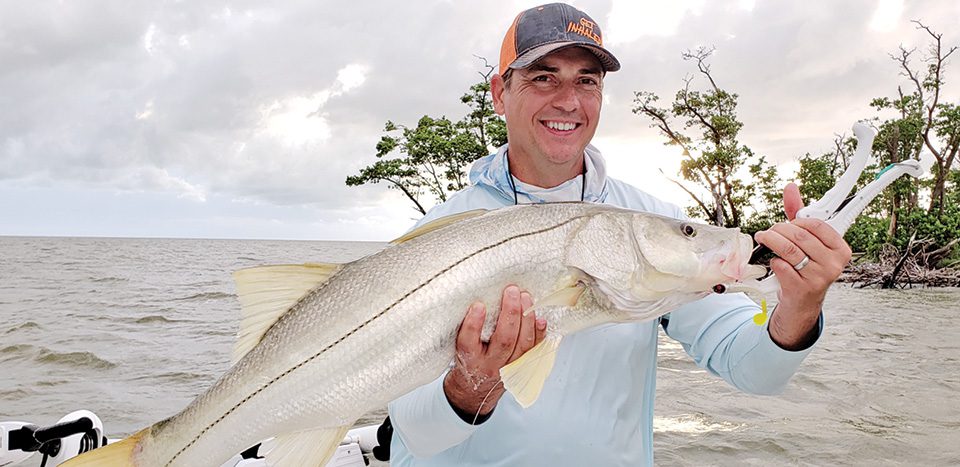By Capt. Michael Okruhlik
As with any saltwater fish, tide is of extreme importance when it comes to catching snook. Not only does the tide need to be moving, but with the large tidal swings in the Everglades, there needs to be ample water in the area you choose to fish. During stronger tidal movement, it is to your advantage to retrieve your lure with the current or at a slight angle crossing it. A lure worked upstream will most likely go untouched.
When it comes to structure in the Everglades, you will find as many options as you will opinions and approaches to fish them. The most popular, and what comes to mind first are the vast picturesque mangrove shorelines. These are the areas where fishing shows are made, but I’m not convinced they are the best for catching mature snook.
The Glades have an abundance of shell bottoms and islands, points littered with dead mangroves that mark the underwater jungle lying beneath. Then you have the less obvious, but productive, submerged sand flats that were once their own island before Mother Nature dwindled them down to what they are today, fish magnets!
Granted, I’m no expert in fishing the Everglades. But in the 20-plus years I have been fishing there, I have noticed a few things on how larger snook relate to specific structure, water depth and the presence of different baits.
The mangroves are the most obvious structure, and they are also the most heavily fished. Although popular, I don’t feel they are the most productive for the larger snook. All the large snook I have caught are 20 to 30 yards away from the shoreline in 4 to 7 feet of water. For me, current-swept points with a shell bottom have been the most consistent producer of big snook. Submerged sandbar points are also productive as long as there is current and bait.
Surprisingly, small 1- to 2-inch minnows appear to be the best signal that large snook are in the area. For whatever reason, these tiny fish are followed by some monsters. When I see these small baitfish schooling around, I thoroughly cover that area with my Knockin Tail swimbaits. Snook rely heavily on their distinctive lateral line to feed, and I believe the rattle embedded in these paddletails draws them in for the strike.
The next time you target snook in an area of mangroves, do not pitch into the roots and lose your lure. Fish the deeper water off the points, and be ready for that sudden thump from a heavy snook.
Capt. Michael Okruhlik is the inventor of Knockin Tail Lures with the built in tail rattle, Controlled Descent Lures and the owner of www.MyCoastOutdoors.com.
